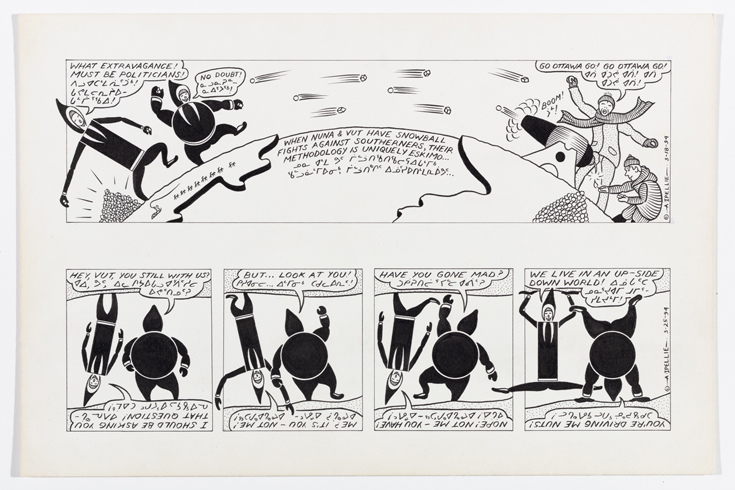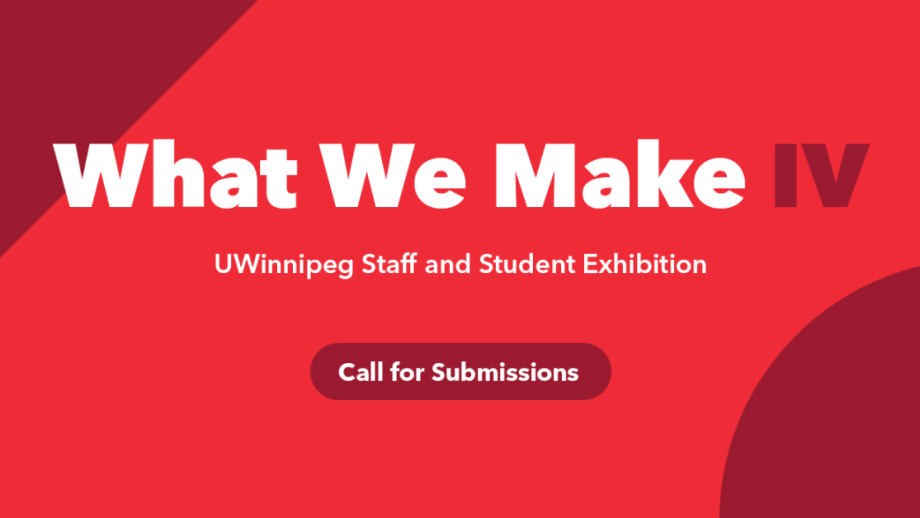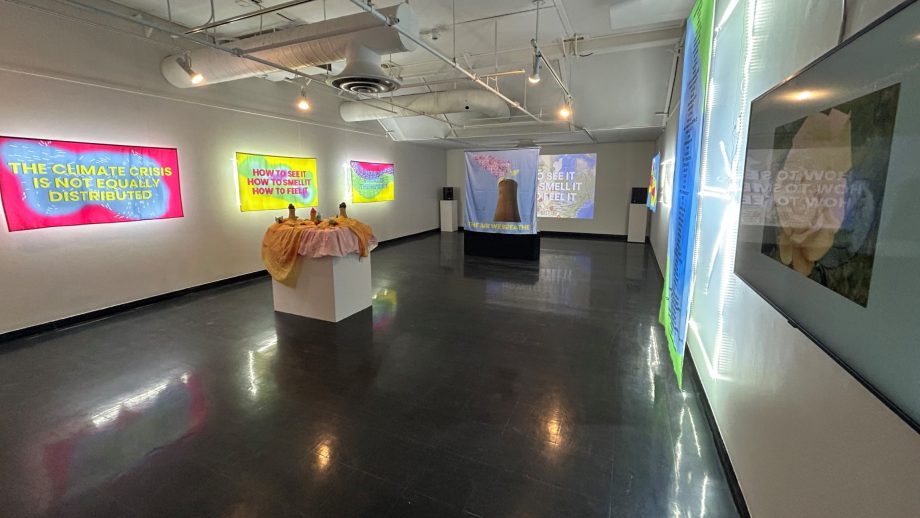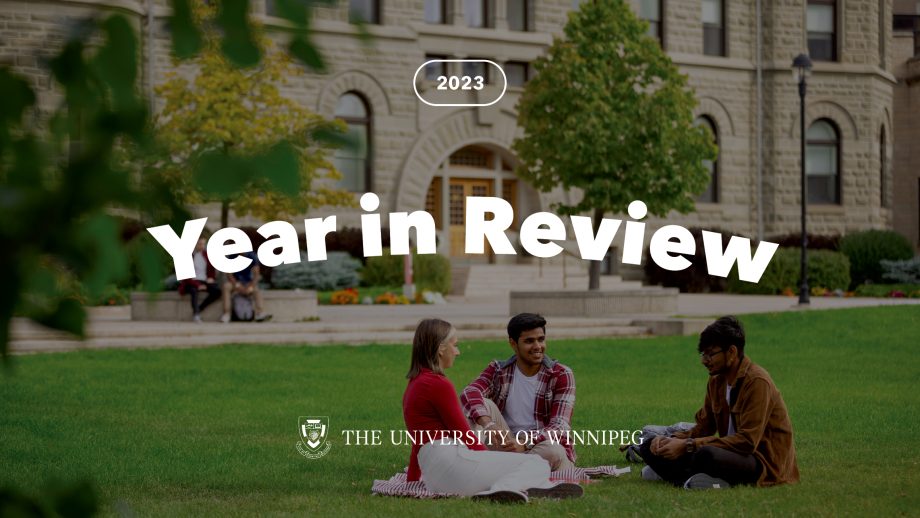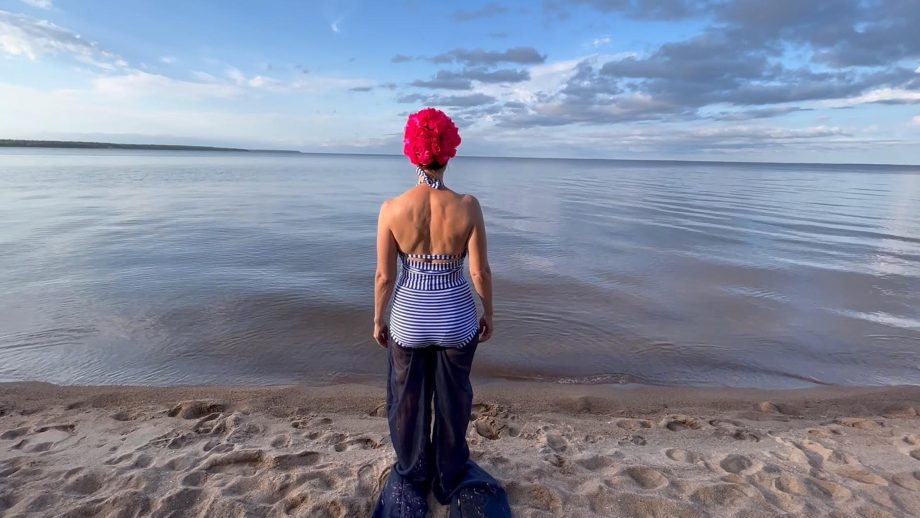Gallery 1C03 is the final stop in a touring exhibition honouring the work of Inuit artist and writer, Alootook Ipellie (1951-2007). The show, which began in Ottawa in late 2018, will be at The University of Winnipeg until April 11, 2020.
Jennifer Gibson, Gallery 1C03 director and curator, met Ipellie when she lived in Ottawa while she was undertaking her Master of Arts in in Canadian Art History. He allowed her to include one of his poems, as well as a selection of his artwork, in her graduate thesis, and was generous in sharing his knowledge of Inuit art with her.
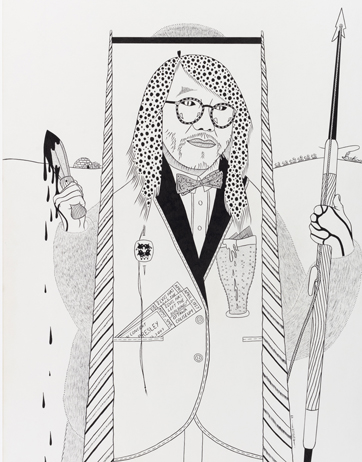
Alootook Ipellie, “The Death of Nomadic Life, the Creeping Emergence of Civilization,” 2007 ink on illustration board (estate of the artist; photo by Justin Wonnacott, courtesy Carleton University Art Gallery, Ottawa
“I knew Alootook personally, so I feel very grateful to have this show on campus,” she said. “This is the first retrospective of his work and it demonstrates the importance, and continued relevance of his creative vision.”
Gibson is thrilled that, timed with the exhibit stopping in Winnipeg, Alootook’s drawing, The Death of Nomadic Life, The Creeping Emergence of Civilization (2007) will appear on the cover of the spring 2020 edition of Contemporary Verse 2: The Canadian Journal of Poetry and Critical Writing.
His drawings, The Half-Fish and The Qalupalik will also appear inside the issue, along with his previously unpublished poems, “It Was Not ‘Jajai-ja-jiijaaa’ Anymore, But ‘Amen,’” and “Anaanaak.”
Ipellie was born at Nuvuqquq, on Baffin Island, and grew up in Iqaluit before moving to Ottawa as a young man. He started working as a translator, illustrator, and reporter for Inuit Monthly (renamed Inuit Today) in the early 1970s, and later was its editor. He was known for his wry humour and immense patience.
Through poetry, art, articles, and essays, Ipellie gave voice to important cultural, political, and social issues affecting Inuit Nunangat, such as the effects of colonialization, alcohol abuse, and environmental issues.
When he was inducted into the Canadian Cartoonist Hall of Fame in 2019, Ipellie’s friend, Louisa Gillespie, who attended residential school with him in Churchill, Manitoba, was quoted in Nunatsiaq News, saying this of his work,
“He was able to illuminate and articulate things about the North and Inuit way of life that no one had addressed in those ways prior to him doing it. So his cartoons remain relevant, and beautiful, and important today.”
Ipellie was a prodigious artist, creating hundreds of political cartoons, and serial comic strips. While some of his larger drawings, published in his 1993 book, Arctic Dreams and Nightmares, are well-known, Ipellie’s work has not been widely exhibited, before now.
“With great wit, passion, sensitivity and patience, Ipellie articulated significant issues affecting Inuit Nunangat. including political sovereignty, climate change, resource extraction and the ongoing impacts of colonization,” said Sandra Dyck, director of the Carleton University Art Gallery. “It has been a great joy to gather his extraordinary work together and bring it to broader public attention. There is no one like him.”
Dyck co-curated the exhibit along with Dr. Heather Igloliorte, associate professor of art history at Concordia University, and Christine Lalonde, associate curator of Indigenous art at the National Gallery of Canada.
Gallery 1C03 is the final venue for the show. It was presented first at Carleton University Art Gallery, in Ottawa, in 2018. The exhibit spent early 2019 at the Richard F. Brush Art Gallery, St Lawrence University, in Canton, New York. In April 2019 it travelled back to Canada, to the Nunata Sunakkutaangit Museum, in Iqaluit, before heading to the Art Gallery of Hamilton in Hamilton, Ontario in fall 2019, and landing in Winnipeg on February 27, 2020.
This circulating exhibition, produced by Carleton University Art Gallery (Ottawa, Ontario) was made possible in part by the Canada Council for the Arts and the Ontario Arts Council. Gallery 1C03 also acknowledges financial assistance from the Department of Canadian Heritage for making it possible to host this exhibition, as well as the support of the Manitoba Inuit Association.
View the exhibit:
Alootook Ipellie: Walking Both Sides of an Invisible Border will be on display at Gallery 1C03 until Saturday April 11, and can be viewed during regular gallery hours, Monday – Friday, 12:00 – 4:00 pm, (closed on April 10), and on Saturdays, 1:00 – 4:00 pm.
Poetry reading
Everyone is welcome to attend a poetry reading featuring Duncan Mercredi, Özten Paul, and Marie-Anne Redhead, taking place March 24, 2020, 11:30 am – 12:00 pm, Room 2M67, The University of Winnipeg.
South of Inuit Nunangat – A Conversation, followed by a reception
One of the themes running through Ipellie’s work is the concept of “living in two worlds” – North and South – and his struggle to reconcile them. Join exhibition co-curator Heather Igloliorte, in conversation with urban Inuit women Nikki Komaksiutiksak, Nicole Luke, and Jocelyn Piirainen, as they discuss their experiences living and working outside of Inuit Nunangat. The event takes place April 3, 2020, 2:30 – 4:00 pm, Convocation Hall, The University of Winnipeg, followed by a reception, 4:00 – 6:00 pm, Gallery 1C03.
Gallery 1C03 is located on ground level of Centennial Hall. There are accessible and gender-neutral washrooms on campus. Please consult the accessibility map on the University of Winnipeg website for more detailed information. Admission to the gallery and our programming events are free and everyone is welcome. ASL can be arranged for the poetry reading, conversation, reception and exhibit tours with two weeks’ advance notice by contacting the gallery.
Read more:
- One last look at Alootook (The Uniter)
- Alootook Ipellie: Walking Both Sides of an Invisible Border (Galleries West)

